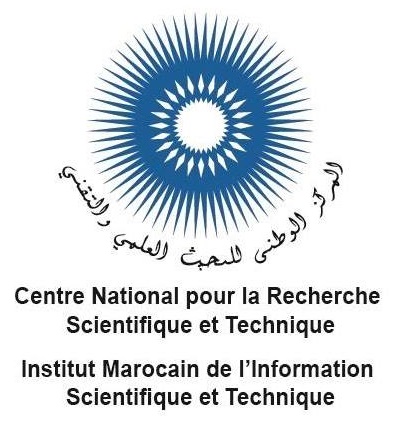Shape Classification Via Contour Matching Using the Perpendicular Distance Functions
Keywords:
Perpendicular distance functions, Principal component analysis, PCA, Straight line, Contour, Moore boundaryAbstract
We developed a novel shape descriptor for object recognition, matching, registration and analysis of two-dimensional (2-D) binary shape silhouettes. In this method, we compute the perpendicular distance from each point on the object contour to the line passing through the fixed point. The fixed point is the centre of gravity of a shape. As a geometrically invariant feature, we measure the perpendicular distance function for each line that satisfies the centre of gravity of an object and one of the points on the shape contour. In the matching stage, we used principal component analysis concerning the moments of the perpendicular distance function. This method gives an excellent discriminative power, which is demonstrated by excellent retrieval performance that has been experimented on several shape benchmarks, including Kimia silhouettes, MPEG7 data set.
Downloads
References
J. Wang, X. Bai, X. You, W. Liu, L. J. Latecki, “Shape matching and classification using height functions,” Pattern Recognition Letters 33 (2012) 134-143.
A. EI-ghazal, O. Basir, S. Belkasim, “Farthest point distance: A new shape signature for Fourier descriptors,” Signal processing: Image Communication 24 (2009) 572-586.
H. Ling, D. W. Jacobs, ”Shape Classification Using the Inner- Distance,” IEEE TRANSACTIONS ON PATTERN ANALYSIS AND MACHINE INTELLIGENCE,VOL. 29, NO. 2, FEBRUARY 2007.
G. Amayeh, S. Kasaei, G. Bebis, A. Tavakkoli, K. Veropoulos, “IMPROVEMENT OF ZERNIKE MOMENT DESCRIPTORS ON AFFINE TRANSFORMED SHAPES,” IEEE conf. 1-4244-0779-6/07-2007.
D. Wolter, L. J. Latecki, “Shape matching for robot mapping,” In: PRICAL: Pacific Rim Internat. Conf. on Artificial Intelligence-2004.
S. Lewin, X. Jiang, A. Clausing, “Perceptually motivated shape evolution with shape-preserving property,” Pattern Recognition Letters 31 (6) 447-453, 2010.
H. Jiang, W. Liu, D. Wang, C. Tian, X. Bai, X. Liu, Y. Wu, W. Liu, “CASE: Connectivity-based skeleton extraction in wireless sensor networks,” In: INFOCOM: IEEE international conf. on computer communications 2916-2920 ( 2009 ).
Z. Wang, M. Liang, “Locally affine invariant descriptors for shape matching and retrival,” IEEE signal process Lett. 17 (9) 803-806 (2010).
J. Wang, Y. Li, X. Bai, Y. Zhang, C. Wang, N. Tang, “Learning context-sensetive similarity by shortest path propagation,” Pattern Recognition 44 (10-11), 2367-2374 (2011).
M. Bicego, P. Lovato, “A bioinformatics approach to 2D shape classification,” Computer vision and Image Understanding 145 ( 2016 ) 59-69.
N. Alajlan, I. E. Rube, M. S. Kamel, G. Freeman, “Shape retrievalusing triangle-area representation and dynamic space warping,” Pattern Recognition 40,1911-1920 (2007).
X. Tang, F. Lin, S. Samson, A. Remsen, “Binary Plankton Image Classification” IEEE Journal of Oceanic Engineering, Vol. 31, No.3, (JULY 2006), 728-735.
Y. Shen, J. Yang, Y. Li, “Finding Salient Points of Shape Contour for Object Recognition”, Proceedings of the 2015 IEEE Conference on Robotics and Biomimetics Zhuhai, China, December 6-9, 2015.
[Y. Mingqiang, K. Kidiyo, R. Joseph, “A Survey of Shape Feature Extraction Techniques”, in Pattern Recognition, Peng-Yeng Yin (Ed.) 43-90, 2008.
S. Loncaric, “A SURVEY OF SHAPE ANALYSIS TECHNIQUES”, Pergamon Pattern Recognition. Vol. 31 No. 8, Page-(983-1001), 1998.
T.B. Sebastian, P.N. Klein, B.B. Kimia, “Recognition of shapes by editing their shock graphs.” IEEE Transactions on Patterns Analysis Machine Intelligence, vol. 25, pp. 116-125, 2004.
L. J. Latecki, R. Lakamper, U. Eckhardt, “Shape descriptors for non-rigid shape with a single closed contour.” contour.” In:CVPR International Conference on Computer Vision and Pattern Recognition, PP. 424-429, 2000.
Downloads
Published
How to Cite
Issue
Section
License
Copyright (c) 2021 Ratnesh Kumar, Kalyani Mali

This work is licensed under a Creative Commons Attribution 4.0 International License.
Copyright on any article in the International Journal of Engineering and Applied Physics is retained by the author(s) under the Creative Commons license, which permits unrestricted use, distribution, and reproduction provided the original work is properly cited.
License agreement
Authors grant IJEAP a license to publish the article and identify IJEAP as the original publisher.
Authors also grant any third party the right to use, distribute and reproduce the article in any medium, provided the original work is properly cited.















